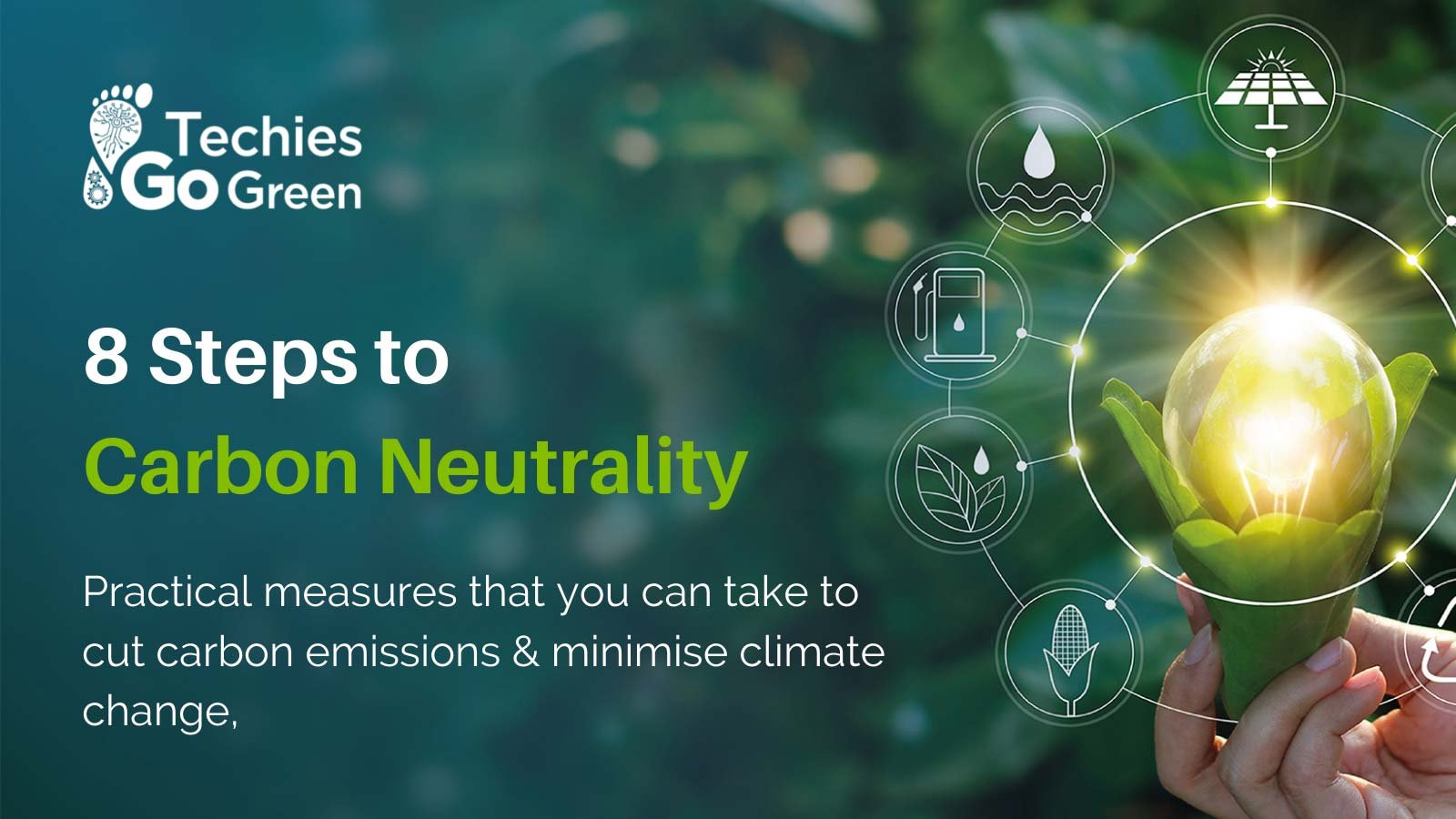8 Steps to Carbon Neutrality
How does a business become carbon neutral? The question on everyone’s lips. The answer is that the onus is on all of us to join the fight to reduce our carbon emissions – and it is not difficult for anyone to reduce their emissions. Here are some practical measures that businesses can take to cut carbon emissions, minimise climate change, and show their customers that they are a responsible business partner
1. Measure your current CO2 emissions
There is an old adage – what gets measured gets managed.
The first thing to do is to understand where you are starting from. What is your current level of carbon emissions and what are the sources of these emissions? Once you understand your starting point, then you can work out where the opportunities are for reducing emissions. In general business CO2 emissions come from using energy – electricity for light, IT, cooling, thermal energy for space, process and water heating, and transport fuels for business travel.
2. Start with low cost energy efficiency measures
There are many ways to save energy without capital investment
Measure your consumption on a regular basis in order to track whether your consumption is rising or falling and investigate when there is a change in the trend
Challenge every reason for using energy in your business – how does it add value to your business? If not, why do you do it?
If it does add value, can you still retain this value add with less energy consumption? For example:
Transport
Do you travel?
Can you minimize routes to reduce energy consumption?
Can you carpool?
Lighting
Do you light areas when no-one is there?
Space heating/cooling
Is the temperature set correctly for the activity in the area?
Do you heat areas that are not occupied?
IT
Does your IT equipment use power saving mode?
Hot Water
Does IT equipment use power saving mode?
Behaviour
Are staff motivated and educated to minimise energy consumption
3. Energy Efficient measures requiring investment
Transport
Electric vehicles are more energy efficient, cause less CO2 emissions, less air pollution, less noise pollution, and have very low service costs
Lighting
LED lights consume significantly less energy and last substantially longer thus saving on maintenance costs and health and safety issues
Good lighting controls will ensure that the right amount of light is provided in the right place at the right time
Space Heat
The 1st thing to look at when investing to reduce heating costs is the building fabric – if it is not well insulated and draughtproofed then even the most efficient heating system will be wasteful
Heat pumps will substantially reduce CO2 emissions if used in well insulated buildings
Heating controls are vital to ensure that the right amount of heat is provided in the right place at the right time
4. Green Procurement - Purchase Refurbished and Recycled IT Equipment
When buying new equipment use Life Cycle Cost analysis to ensure that you buy the equipment that makes most sense for your business over it’s lifetime taking into account the up front cost plus ongoing energy and maintenance costs.. Check out more details about the Circular Economy here.
5. Energy Efficient Design
When upgrading any facility, or building a new facility, it is essential to design in energy efficiency at the earliest stage in the design process when the greatest energy saving opportunities are available. This will save energy but – if done correctly – it often also results in lower capital costs.
6. Green electricity procurement
Having applied the energy efficiency first principles to reduce your electricity consumption, consider buying electricity from a verified renewable electricity provider.
7. On site Renewable energy
On site renewable energy is becoming more attractive as technologies improve and costs fall.
Solar PV (PhotoVoltaics) – generate electricity which can be used onsite or sold to the grid
Solar thermal – generate hot water
Heat pumps – take low grade heat from outside, upgrade it
Biomass boilers – if the biomass is sustainable and locally sourced this can reduce emissions
Wind – wind turbines may be appropriate for businesses not located in urban settings
Check out more details on Renewable Energy here.
8. Carbon offsetting
When you have gone through the above steps to minimise your carbon footprint, if you want to become carbon neutral, or carbon negative, you can buy carbon offsets - for example you could invest in tree planting which will remove CO2 from the atmosphere. It is important that the carbon offsets that you purchase are verifiable to avoid greenwashing.
The Techies Go Green Mission
Techies Go Green is a movement of IT and tech-oriented companies who are committed to decarbonising their businesses and making them green and verifiably sustainable.
We will enable each member to purposefully improve their energy efficiency by collaborating and sharing practical know-how with the main aim of making every signatory carbon neutral by 2030.


